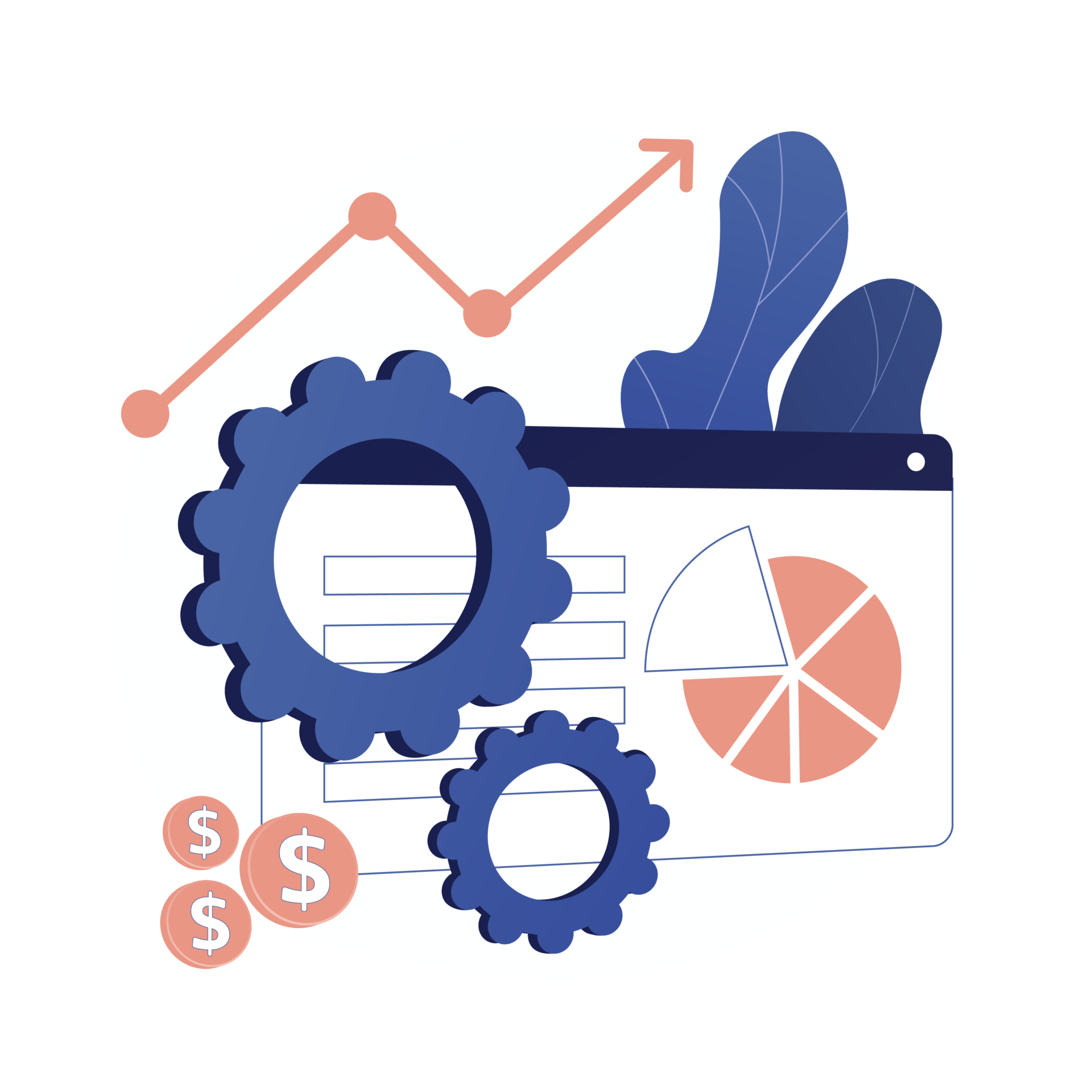The purpose of market segmentation is to split your audience into groups according to their different needs or preferences. Businesses use market segmentation to better target leads and customers by providing them with the right information at the right time to increase the chance of a conversion.
Is Market Segmentation Necessary?
Most marketers agree that segmentation is necessary. In one survey, 81 percent of executives said that segmentation was critical for growing profits.
This is because if you try to target everyone in your target audience with a single message, prospects may feel that a campaign is aimed at someone other than them. In addition, a lack of segmentation puts you at risk for attracting users outside your target audience. If these leads enter your sales funnel, you’ll waste resources trying to convert them.
Types of Market Segmentation
There are several types of market segmentation, but businesses tend to stick to the four most common.
1. Demographic Segmentation
The most popular type of market segmentation is demographic segmentation. Business owners often prefer this option because it is simple to implement and effective.
Demographic segmentation involves dividing your target audience into groups according to statistical information. Some categories to consider include:
- Age
- Gender
- Job title
- Income
- Educational level
As long as you’re using factual data, you’re using demographic segmentation. As it tends to be easy to gather this information about your leads, demographic market segmentation is an option for most businesses.
2. Psychographic Segmentation
Another option is to use psychographic information about your audience. Psychographics include:
- Goals
- Values
- Interests
- Beliefs
- Lifestyles
- Motivations
It can be more challenging to identify these than demographics, as they’re not data points. When you are able to find out this information, however, you can create particularly powerful messages.
3. Behavioral Segmentation
Behavioral segmentation is quite different from both of the above, as it looks at what users do rather than who they are. You can use this type of segmentation for leads or customers who have already had some interactions with your brand.
For instance, you can create groups based on:
- Previous purchases
- Amount spent
- Type of content viewed
- Customer loyalty
- Ratings and reviews
- Premium content downloaded
- Items added to shopping cart
- Time spent on site
- Exit pages
- First time or repeat visitor
You can find behavioral information by checking your website analytics.
4. Geographical Segmentation
Often the easiest type of segmentation to implement is geographical, although it is also quite simplistic. Depending on where your business operates, geographical segmentation could be extremely localized or you may care more about what state or country users are in.
Geographical segmentation is useful for everything from marketing in-person events and sending users to the right physical location to presenting appropriate products according to the weather or season. Geographical segmentation is especially important at the moment, as different states and countries have different stay-at-home orders and lockdowns.
5. Other Types of Segmentation
It’s also useful to be aware of other marketing segmentation strategies. Some of the following are similar to the top four, but they have distinct uses.
- Technographic segmentation — This involves considering how your customers use technology. For instance, you could assign users to groups according to where they fall in the technology adoption lifecycle, which begins with innovators and early adopters and ends with laggards. Alternatively, you may just be interested what device visitors use to access your website.
- Firmographic segmentation — B2B companies often find firmographic segmentation useful. Instead of considering information about the individual, you use data about the business, like industry or company size.
- Generational segmentation — Millennials and Gen Z may be close in age, but most marketers are aware that these are two distinct groups in terms of behavior, interests, and values. If your audience is made up of a wide age range, generational segmentation may be useful for creating messages that resonate with users.
- Life-stage segmentation — Instead of using age as an indicator, you could consider what life stage users are at. Life-stage segmentation can use factors like family status, homeownership, or whether users are students, working, or retired.
- Transactional segmentation — This final type of market segmentation is just for current customers, as it relies on past transactions with your brand. You could consider how long it has been since users made a purchase, why they originally signed up with your company, or their number of total purchases.

Advantages to Market Segmentation
All of the above types of segmentation lead to the following benefits.
1. Strengthen Your Message
Market segmentation means you are able to address specific pain points a subset of your audience is facing. By avoiding generic language, you create a message that leads and customers can relate to. Plus, segmentation makes it much easier to avoid going off brand.
2. Improve Your ROI
Targeting your efforts means you spend less acquiring each customer. You’re less likely to waste time on unqualified leads and you’re able to nurture qualified leads with the right content.
In addition, when your segments take into account how much customers are able (or willing) to spend, you can push for the highest-value sale possible for those users. At the same time, you’ll avoid losing a lead because you tried nurturing to an offering that was too expensive.
3. Increase Customer Loyalty
When customers feel like a marketing message was made for them, they develop a stronger connection with your brand. This leads to customer loyalty, which, in turn, results in upselling and cross-selling.
4. Discover New Opportunities
Market segmentation analysis can reveal new opportunities for your brand. You may find a new niche to target or discover new ways to target your current audience.
5. Stand Out from the Competition
You attract customers by showing them what is unique about your brand. Through segmentation, you can go a step further and show users how these unique characteristics mean your offerings are perfect for them.
6. Focus on the Best Marketing Channels
It is too expensive and time consuming to use all the marketing channels available to you. With segmentation, you can choose just the channels that specific types of users respond to best.
Are There Any Disadvantages to Market Segmentation?
Despite all these benefits, there are a few risks and limitations of market segmentation:
- Incorrect segments — You need to know plenty about your target audience before you implement segmentation. Otherwise, you could end up creating profiles that don’t actually match your ideal customers.
- Lack of opportunity to segment — Some marketing channels you want to use may not give you the chance to segment according to the criteria you want to use.
- High cost — Market segmentation can be expensive. You’ll need to find out the key details about customers through analytics, surveys, and polls. Then, you’ll need to run a variety of campaigns to target each segment.
- Too narrow segments — If you’re too restrictive with your segments, your investment to market to these users will be too high to make a decent return.
- Too broad segments — It’s equally possible to create a segment that is too wide. Casting a wide net means attracting a large number of leads who will never convert.
How to Segment Your Audience
Now, all that’s left is to implement market segmentation yourself.
Step 1: Perform a Market Segmentation Analysis
To start, you’ll need to gain as much information about your audience as possible. You can find this through:
- Interviews with customers
- Talking with your sales team
- Website analytics
- Any other data you have on customers and leads
Step 2: Choose the Right Type of Segmentation
Whatever type of segmentation you choose, you must be able to say with confidence that users do belong in the segments you assign them. You should be able to find out the relevant information about users with relative ease. In addition, segments must be significantly large enough to be worth using and small enough that marketing messages make sense to all the users in the segment. Finally, each segment should be distinct enough that there is no overlap.
Step 3: Test Your Segments
Before you decide to implement your segments on a grand scale, test them on a small section of your audience. Track the results to decide if they are effective or if you need to go in a slightly different direction.
Outsourcing Market Segmentation
To see the advantages of market segmentation and avoid the risks, it is essential that you implement your strategy correctly. If you have no experience in this area, a better option than trying to do it yourself is to outsource the work. A top choice is a virtual assistant who knows how to segment a market.
The virtual assistants for sales at MYVA360 are experts in all aspects of lead nurturing, including the market segmentation process. In addition to supporting you with market segmentation, they can find new opportunities, log interactions with prospects, and monitor analytics. This will leave you free to focus on closing deals.
Contact MYVA360 to discuss your needs and to find out what services you could benefit from.





